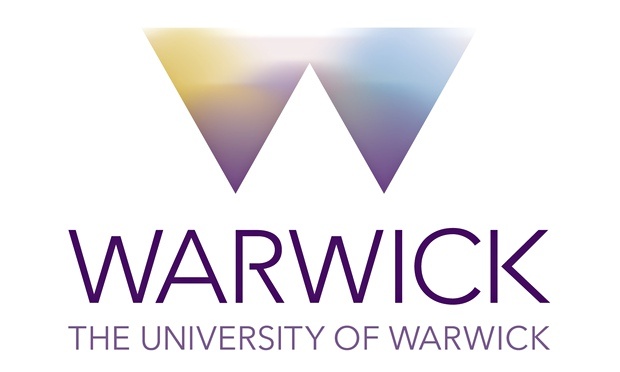From its inception, the NHS was a focus for medical research and invention, as well as the delivery of established medical treatments. The constant need to cut or contain costs while providing state-of-the-art services to all was one key driver of innovation. Cost certainly played a role in Ministry of Health’s decision to commission a brand new hearing aid for the NHS in 1948. The Medresco hearing aid – its name derived from the UK Medical Research Council through which its development was funded – was the result.
As early as 1944, the wartime government had expressed a keen interest in the development of affordable ‘national standardized hearing aids’, not least to facilitate their free provision to soldiers whose hearing had been damaged in military service. While the MRC investigated the electro-acoustics of hearing replacement, the government opened discussions with the Association of Hearing Aid Manufacturers.
In the end, these discussions were unsuccessful. Private manufacturers, intent on creating ever-smaller devices for paying customers, did not or could not offer an economical solution for the masses. When the advent of the NHS opened the door to universal provision, its leaders chose to go it alone. The resulting Medresco device was (at least in the eyes of its supporters) a symbol of the new, egalitarian Britain of the post-war years, and of the NHS which would make ‘positive health’ accessible to all. Nor was the Medresco machine to remain static: by 1951, three improved models had already emerged, and the device was regularly updated.
Like spectacles and dentures, Medresco hearing aids were available for free through the NHS, and uptake was substantial. Given the initially limited scale of manufacture, long waiting list were inevitable, and largely accepted with patience. While the NHS was issuing the aids at a rate of 1,015 per week by the end of 1949, 86,000 patients were still waiting. A survey found that half of users were ‘enthusiastic’ about the aid, while 83% approved of it. For most, the cost of a commercial aid would have posed ‘real hardship’: the aid, researchers concluded, had already made ‘a very real contribution to the welfare and happiness of deaf people in this country’. 320,000 had been issued by 1953. For children and the ‘aged deaf’, Medresco devices were a ‘blessing’.
Yet almost immediately, some specialist medical professionals and the makers of proprietary devices began to complain about clinical ‘totalitarianism’: only the Medresco devices could be demonstrated in NHS clinics, and only they was free. In 1953, a new survey of use reported that some Medresco devices barely made it out of their boxes, and only 18% were ever used in the workplace (though researchers were swift to point out that this was mainly because most users – children and the elderly — were not in employment). The Hearing Aid Manufacturers Association immediately asked why NHS users should not have the benefit of developments in the commercial hearing aid sector? ‘The exclusion of commercial hearing aids from the Health Service means that the hard-of-hearing are denied new developments as they become available’, manufacturers complained. Perhaps instead of giving its ‘national’ hearing aid away for free, the nation would get better value for money by spending more on earlier diagnosis and prevention of deafness (and implicitly, leaving those diagnosed to buy the hearing aids of their choice).
By 1959, some doctors condemned the Medresco aid as ‘archaic and conspicuous’. In contrast, defenders observed that the now decade-old device, while ‘obviously cumbersome by modern standards’, ‘remained robust’ and in terms of performance, still compared ‘favourably’ to ‘expensive commercial instruments’. A user noted that while ‘cumbrous’, the Medresco aid was durable – and besides, surely instead of complaining about the hearing-aid’s bulk and visibility, ‘it is time and more that the general attitude towards deafness and hearing aids changed until they are taken for granted like short-sight and spectacles. Deafness is a disability, not a misdemeanour.’
The Medresco aid began its life as a symbol of medical modernity, inclusiveness and egalitarianism. But it was never uncontroversial, and was not always loved by users embarrassed by the stigma of disability, or the popular association between hearing loss and old age. In 1973, the profession called for a new report, and production and prescribing of the device had been discontinued by 1982 in favour of ‘more modern’– and commercially made – devices.
RB
Should you wish to remove a comment you have made, please contact us



My father bought me a surplus Medresco Hearing aid in the late 50’s from Proops with parts to make an amplified crystal radio. The three valves in the aid eat through the two batteries at a prodigious rate. It did not last long.
I’m writing a history of UK hearing aids for the British Association of Teachers of the Deaf (BAToD) Journal. Your photograph of the medresco aid is better than mine – could I use it with permission please?
You can indeed: it is available CC-BY from the Wellcome Images collection, which has an easy free downloading tool so you can get the right size of image for your needs. They say a bit about it and have a link here: https://wellcomecollection.org/works/dehyk68h
Enjoy!
I think that the development of the Madresco hearing aid in 1948 was the best move the NHS did In the 60s I had to go and change my employers batteries each week he was an old man by then but had been deaf for years and he thought that the ol10 he had was brilliant. my mother had an ol56 in the 70s and she thought it was brilliant. I had perfect hearing till 5 years ago but it has degraded to such an extent that I now need two one left completely deaf in that one and one in the right, that hearing has gone down. I have two digital aids and the best thing is they are equiped for hearing loops. long may the health service provide hearing aids weather free or at cost.
Thank you for sharing this. When I first read the Medresco story, I was amazed and delighted as well!
I have one of these hearing aids I found while clearing house
I was trying to find someone who would be interested in its history would like to have it. Let me know
Hi! I will look into this and let you know!
In 1953 I got one of these. Being seven years old there were some knacks to carry the huge batteries on a strap, which seemed big and to clip on the huge black microphone unit. How to take it to school? Father made a wooden box.
The problems with playground bullies were slowed down by this kit. I used to take it off slowly and hand it all to my seconds. Then fighting began. Later, I left it off for playtime, and actually was not in fights after that.
Now I am still an architect at the age of 73, and wear CIC digital aids connected by bluetooth. Into these I can add the tv, my phone and other music. Site meetings go better when I can hear the excuses for things. !
I LOVE this story: thank you so much for sharing it. Having been able to handle the Medresco models myself — so heavy and cumbersome, even for a small adult! — I can well imagine the daunting task of carrying it around all day as a child, but it sounds like you made the ‘ritual’ of removing it work very well for you!
I remembered I had Medresco hearing aid were heavy and bulk when I was 5 years old, until I had new modern hearing aid pocket in my shirt when I was 10 then got NHS hearing aids until 21 got private BTE hearing aid until the age 30 got NHS BTE until I was 45 offer for Cochlear implant but told not suitable for me but it is ENT consultant by mistake thinks may not work for me so offer digital hearing aids upgrading 4 times until I was 64 gone through assessment for Cochlear implant found suitable and then few months later received implantation surgery then activated on 21st March 2016 wow! Biggest difference in my life can hear from low to high frequencies ever better than hearing aids, I wish had Cochlear implant when I am infant! Never too late I loves new sounds and learning medium to high frequencies!
Thank you so much for sharing your experiences with such a wide range of technologies across the NHS’s history of provision. Happy listening with your implant!